 Last year I bought my first shotgun, and even though I’d been around shotguns my whole life, I didn’t really know where to start. There are many people who know way more about guns than me. If you have detailed questions, go ask someone like KenC or LoganB. But if you’re just looking for the super basics, maybe something in this post will help you. I know it was a daunting task for me. As I looked around online I found forum and after forum of people arguing tiny little details about very specific gun parts instead of giving me the overall guidance I was looking for. So in this post, I’ll describe what I was looking for, some features I looked at along the way, and what I ended up with.
Last year I bought my first shotgun, and even though I’d been around shotguns my whole life, I didn’t really know where to start. There are many people who know way more about guns than me. If you have detailed questions, go ask someone like KenC or LoganB. But if you’re just looking for the super basics, maybe something in this post will help you. I know it was a daunting task for me. As I looked around online I found forum and after forum of people arguing tiny little details about very specific gun parts instead of giving me the overall guidance I was looking for. So in this post, I’ll describe what I was looking for, some features I looked at along the way, and what I ended up with.
First off, I’m not really interested in hunting. I have nothing against it and could see picking it up in the future, but this gun purchase was 100% for shooting trap. If you’re going to be hunting, then you might want to research what characteristics work well for the animal you’re hunting.
There are lots of shotgun sizes. You could get (in order of smallest to largest) a .410, 20 gauge, 16 gauge, 12 gauge, 10 gauge or even an 8 gauge. Those numbers refer to the diameter of the barrel. The 12 gauge is the most popular and is pretty much the only thing you’ll see at the trap range unless a junior is there with a 20 gauge.
Once you decide on the size of the gun, you need to figure out how the gun will cycle through multiple shots.
- A single shot gun means that you put one shell in at a time. Every time you fire you break the barrel open, eject the old shell and put the next one in.
- Pump shotguns will hold about five shells. After you shoot, you pull the forestack back and push it forward again to eject the old shell and insert the new shell. This is a very common entry level gun.
- A semi-automatic shotgun looks roughly like a pump shotgun except that every time you shoot, the shell is automatically ejected and the next one is chambered. You can immediately pull the trigger again to fire the next round.
- An over-under shotgun has two barrels with one on top of the other. You break the barrel open to manually insert a shell in each barrel, but then you can rapidly shoot two shells in succession.
- A side-by-side is similar to an over-under except the barrels are laid out horizontally instead of vertically. These aren’t too common anymore.
A semi-automatic or over-under is what you’ll see more advanced trap shooters using because the more complicated versions of the game require multiple shots. You can’t really use a pump shotgun fast enough to get off two shots in trap. Those types of guns are also significantly more expensive. This was going to be my first gun. I didn’t know how long I’d stick with the sport so I didn’t want to spend a ton. That meant I was getting a pump.
At this point I knew I was getting a 12 gauge pump and I just had to pick out the specific model. Two of the most common entry level guns in this category are the Mossberg 500 and the Remington 870. Both have been produced for the last 40-50 years. That means they’ve worked out all the bugs and there is a huge after market parts selection if you want to customize your gun. Plan on spending about $400-500 for the gun, a cleaning kit and a case. I chose the Remington 870 but they’re both good American-made guns. The other things you’ll need right off the bat are some kind of ear protection (foam ear plugs work fine) and safety glasses.
Both of these guns come in multiple barrel lengths. Most trap shooters will use a barrel between 28 and 32”. The longest Remington 870 gun I could find came with a 28” barrel, but as I mentioned before, you can buy other barrels for it down the road. I haven’t done that yet and don’t plan to. My first purchase will probably be a longer stock because that part is a bit to short for me. This is also useful if you’re looking for a home defense shotgun. You could buy one of these guns and then buy a second, shorter barrel.
So how do you buy a gun? That varies widely by state and what type of gun you’re buying. In Washington, you just walk into a store, fill out some paperwork, wait a few minutes for them to do a quick background check by phone and then you’re walking out with a shotgun. Shop around because prices do vary. While Sports Authority isn’t the first place I’d think to buy a gun, they had the best deal so that’s where I bought it. There are used markets for shotguns, but be careful to check the laws about transferring ownership and make sure you know the quality of what you’re buying. If you really want to go used, you might want to start with an actual gun dealer for your first purchase.
Once you have the gun, check out wheretoshoot.org to find a range near you. If you live around me, check out the Kenmore Shooting Range. They have archery, rifle, pistol, and shotgun facilities available. Their website is about 10 years old, but the facility and the people that run it are great. I’d be more than happy to go with you and show you around.
 In the past you’ve had to shell out hundreds of dollars to get the Microsoft Office suite, or maybe you got it for a little less with your new computer. Then you’re stuck with that version no matter what versions arrive later. And what if you have five computers in your house? Well either you break the law or you buy a bunch of copies. It’s a big cost.
In the past you’ve had to shell out hundreds of dollars to get the Microsoft Office suite, or maybe you got it for a little less with your new computer. Then you’re stuck with that version no matter what versions arrive later. And what if you have five computers in your house? Well either you break the law or you buy a bunch of copies. It’s a big cost.
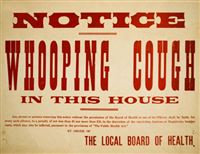 Note: I realize that some of you are anti-vaccine. This post is being written because I find it amazing that we can have an epidemic like this, not necessarily to try to change your mind about vaccines.
Note: I realize that some of you are anti-vaccine. This post is being written because I find it amazing that we can have an epidemic like this, not necessarily to try to change your mind about vaccines.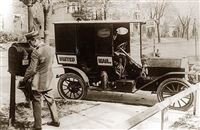 It looks like the Post Office is going to cut Saturday delivery to save money. It’s a novel idea: cut costs to balance your budget. No wonder it’s causing so much confusion in D.C. But regardless of the politics or whether it’s even legal for them to do this, I think the Post Office is missing some big opportunities.
It looks like the Post Office is going to cut Saturday delivery to save money. It’s a novel idea: cut costs to balance your budget. No wonder it’s causing so much confusion in D.C. But regardless of the politics or whether it’s even legal for them to do this, I think the Post Office is missing some big opportunities.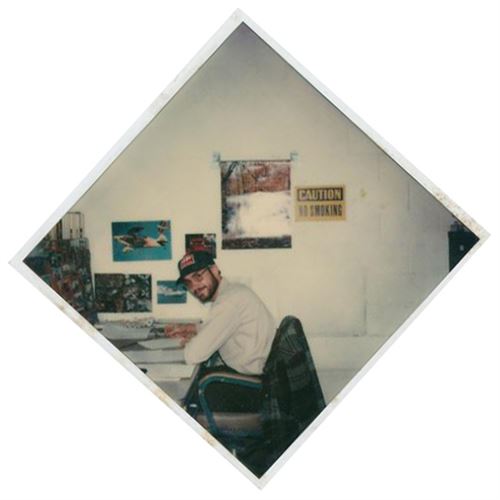

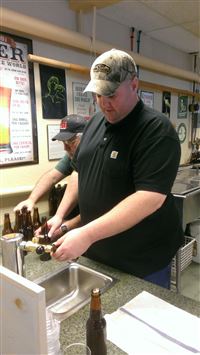 A couple weeks ago, Don, Logan and I made two full batches of beer at
A couple weeks ago, Don, Logan and I made two full batches of beer at 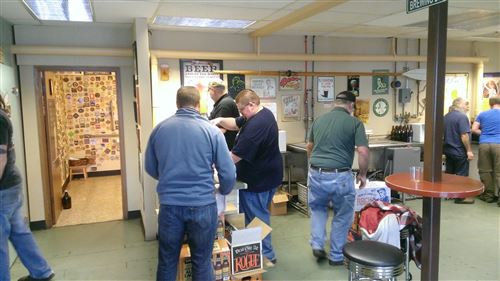
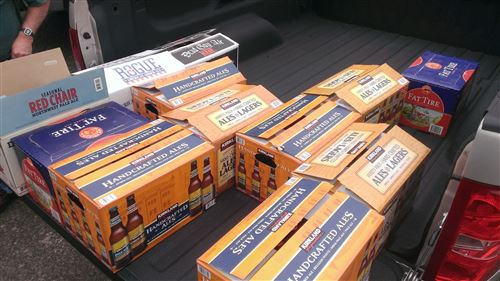
 Happy Valentine’s Day to the love of my life and the mother of our unborn son!
Happy Valentine’s Day to the love of my life and the mother of our unborn son! Late one night a few years ago, I discovered a Martens Brewery in Belgium. For a 255 year old brewery, they have an embarrassingly
Late one night a few years ago, I discovered a Martens Brewery in Belgium. For a 255 year old brewery, they have an embarrassingly  I’ve gotten used to having my hair cut pretty low. I like being able to cut it by myself for free whenever I feel like it, and I like being able to wear a hat or helmet without getting hat hair. This winter I’ve been supplementing the short hair with a beard.
I’ve gotten used to having my hair cut pretty low. I like being able to cut it by myself for free whenever I feel like it, and I like being able to wear a hat or helmet without getting hat hair. This winter I’ve been supplementing the short hair with a beard.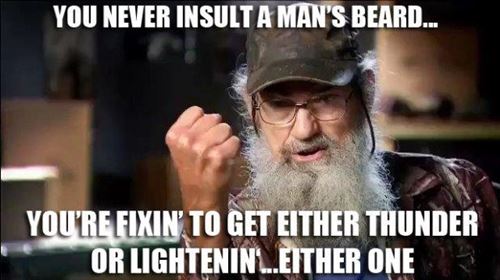
 Last year I bought my first shotgun, and even though I’d been around shotguns my whole life, I didn’t really know where to start. There are many people who know way more about guns than me. If you have detailed questions, go ask someone like KenC or LoganB. But if you’re just looking for the super basics, maybe something in this post will help you. I know it was a daunting task for me. As I looked around online I found forum and after forum of people arguing tiny little details about very specific gun parts instead of giving me the overall guidance I was looking for. So in this post, I’ll describe what I was looking for, some features I looked at along the way, and what I ended up with.
Last year I bought my first shotgun, and even though I’d been around shotguns my whole life, I didn’t really know where to start. There are many people who know way more about guns than me. If you have detailed questions, go ask someone like KenC or LoganB. But if you’re just looking for the super basics, maybe something in this post will help you. I know it was a daunting task for me. As I looked around online I found forum and after forum of people arguing tiny little details about very specific gun parts instead of giving me the overall guidance I was looking for. So in this post, I’ll describe what I was looking for, some features I looked at along the way, and what I ended up with.
Bimini Ring
The game started in England hundreds of years ago and over there it’s called “Ringing the Bull” because they used a bull nose ring. When the English settled the Caribbean, they brought that game with them and it really caught on. Bimini is a town in the Bahamas and I guess that’s where it got it’s new name.
It’s not a wildly exciting game, but as with most games like this, it’s a fun way to pass time with friends. Once you get the hang of it, you can get it to stick on the hook fairly regularly. The official scoring rules require a ringer to get any points, but an easier way to play includes giving points if you just touch the hook on the wall with the ring. And since this game is from the Caribbean, I’ve added my own suggested rule of playing with rum in your hand. You can check online to find the measurements for setting up your own game.
This game is super cheap and can be played just about anywhere. I think we’ll be adding it to our regular set of games which also includes bocce ball, Kan Jam, hillbilly horseshoes, and of course, corn hole.